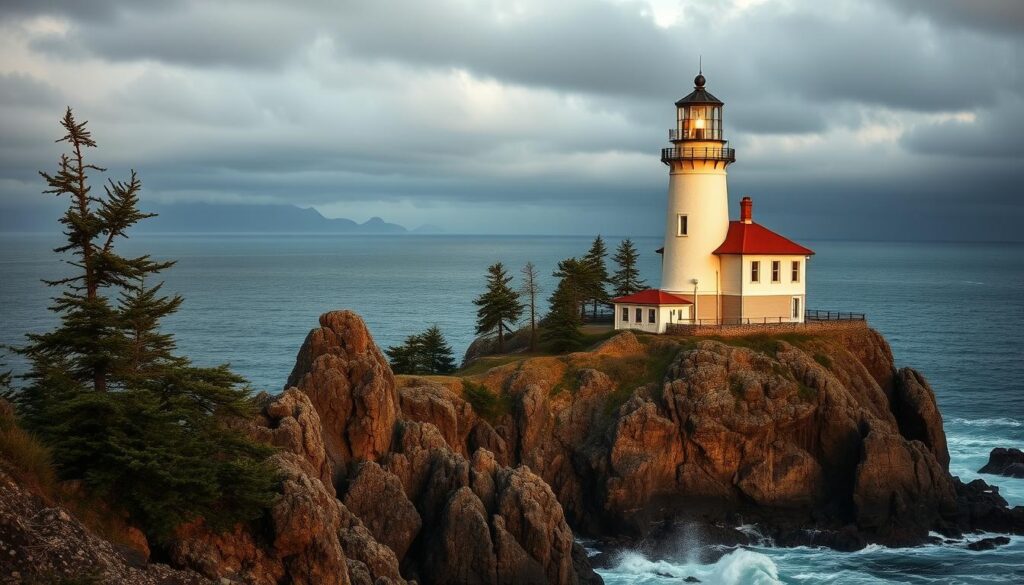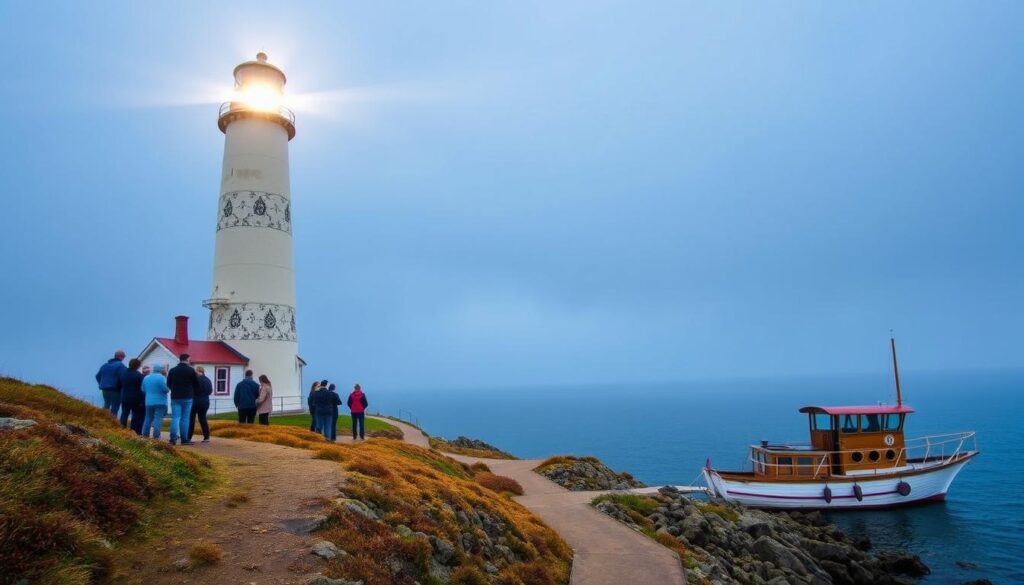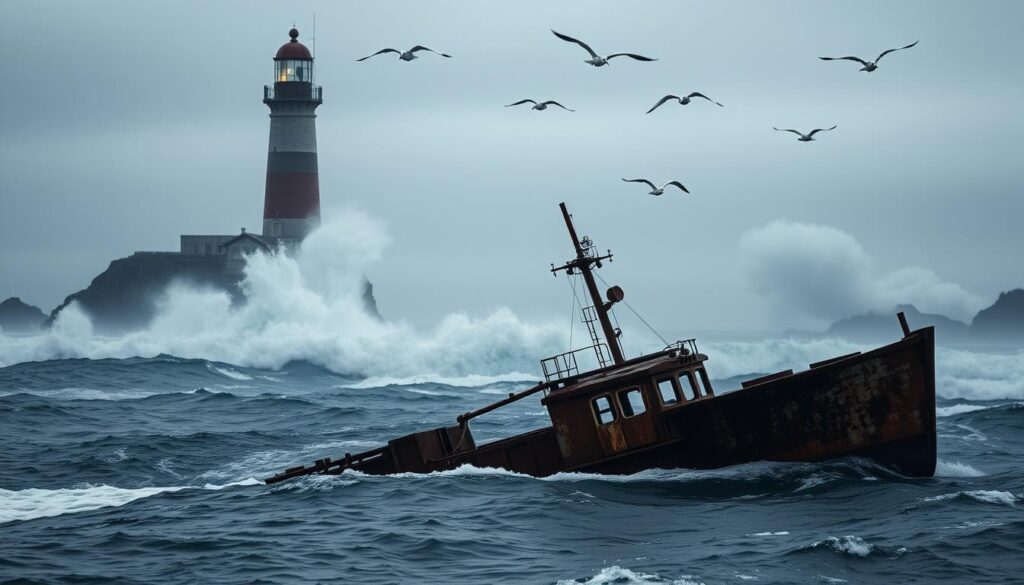The Pacific Northwest coast contains a total of more than 30 surviving historic lighthouses. Since the time of centuries people have relied on these prominent landmarks to navigate their ships while experiencing their dual value of historical significance and picturesque beauty.
These lighthouses take a position on cliffs and exist within state parks past their role as navigation markers. These cultural landmarks preserve the stories of keepers who endured tough circumstances for maintaining light operations. The facilities still welcome visitors who can observe their architectural features and obtain knowledge about maritime history while taking in the beautiful harbor vistas.
Each light-station between Washington and Oregon presents visitors with its own distinct charm whether they stand at cliff’s edge or beachfront. The summits between Washington and Oregon offer travelers both exciting discoveries about the past along with stunning ocean views.
Key Takeaways
- Over 30 historic lighthouses dot the Pacific Northwest coastline.
- Both functions of these structures enable them to guide ships at sea while embodying cultural significance.
- A significant number of Pacific Northwest lighthouses exist inside state parks that display breathtaking natural beauty.
- Travelers have access to examine architectural masterpieces as well as historical artifacts and keeper tales.
- The area presents visitors with landscapes both grand in appearance and maritime heritage sites.
- Visitors interested in historic lighthouses should explore all those found in the Pacific Northwest.
Throughout numerous centuries Pacific Northwest dramatic shores have been protected by lighthouse guardians. The distinctive structures serve vital maritime purposes by helping vessels reach safety on dangerous waterways. Through their active beacons these installations have protected numerous people which established them as incidents representing safety alongside strength.
Overview of Coastal Navigation Heritage
Pacific Northwest maritime heritage strongly influenced the development history of lighthouse buildings in this area. In the past keepers operated the lights through manual maintenance that required them to face tough weather conditions while remaining isolated. Modern evolution of technology introduced automated systems to replace the need for manual operations. Modern lighthouses serve as living examples regarding human intellectual achievements and endurance.
The Pacific Northwest waterfront presents itself to travelers through a scenic journey
These lighthouses stand in a setting that lacks catchable natural beauty. The entire area extends from its wild shoreline to the delicate shore pools presenting different remarkable facets to admire. Tour guides provide information about keeper culture and architectural masterpieces of these structures when visitors participate in the guided tours. The guided tours feature distinctive rotating lights along with complex design features as their main highlights.
People who like exploring new things must visit the point lighthouse that stands at the end of a rocky island. The site holds a special appeal for photographers due to its beneficial position which creates gorgeous ocean views. Every visitor gets an unforgettable experience while exploring Pacific Northwest lighthouses either by boat or walking.

History and Architectural Highlights
Two recognizably important lighthouses on Admiralty Head and Cape Disappointment showcase the maritime heritage of this area. These structures recognize the builders and keepers who showed determination in establishing these lighthouses.
Admiralty Head and Cape Disappointment Insights
Among all examples of Italianate Revival architecture Admiralty Head Lighthouse stands as a prominent illustration which resides at Fort Casey Historical State Park. When it was built in 1903 the lighthouse started its mission of guiding ships through the Puget Sound. History fans should see this site because its military background coupled with distinctive design features.
Among all West Coast lighthouses Cape Disappointment stands as one of the oldest structures established in 1856. The lighthouse served as an essential navigational tool for boats which used the dangerous Columbia River Bar. Visitors who examine the lighthouse apparatus and read about the keepers learn about maritime navigation difficulties from the past.
Restoration and Preservation Efforts
These historic structures require preservation in order to safeguard maritime heritage functions in the region. The restoration initiatives at Admiralty Head and Cape Disappointment concentrate on safeguarding their historic design elements. Private organizations along with volunteers have actively participated in these restoration projects.
Guests can visit museum displays and join guided exploration tours which share the historical information as well as restoration efforts of the lighthouses. Visitors who experience these sites develop broader knowledge about their historical value while learning about the dedication shown by the lightkeepers.
The picturesque state parks feature these lighthouses which let people explore historical elements and witness stunning ocean vistas. These locations keep inspiring knowledge as well as educating visitors by preserving the maritime heritage of the Pacific Northwest region.
| Lighthouse | Year Built | Architectural Style | Notable Feature |
|---|---|---|---|
| Admiralty Head | 1903 | Italianate Revival | Military heritage |
| Cape Disappointment | 1856 | Classic Coastal | Oldest on West Coast |
Iconic Lighthouse Destinations and Coastal State Parks
The west coast of Washington State contains a selection of nationally renowned lighthouse structures. These old buildings found their homes inside vast state parks while sharing the best of maritime tradition with visitors who enjoy parkland scenery. Each maritime beacon located from Grays Harbor through Admiralty Head brings forward accounts of both perseverance and innovative engineering.
Discover Washington’s Premier Lighthouse Trails
Visitors can follow scenic park trails in Washington as they travel to see historic light stations with breathtaking perspectives. Visitors should prioritize visiting Grays Harbor Lighthouse which sits atop a point formed by rocky terrain. Guests can admire sea views and coastal landscapes because of the 135-foot tower structure.
The three elements of a must-visit experience can be found at Admiralty Head Lighthouse inside Fort Casey Historical State Park. Tourists find special appeal in this landmark because of its Italianate Revival architecture design and its role as military site. Hikers can easily find the best photo locations because the trails feature well-positioned mile markers along their paths.
Travelers who want thrilling experiences should not miss the point lighthouse situated at Columbia River’s mouth. The setting offers gorgeous ocean views combined with impressive rock formations at this strategic position. Guides give visitors important information about the life of keepers while explaining the difficulties in sustaining these historical buildings.
These lighthouses represent more than navigation instruments because they maintain their cultural importance. Visiting these locations allows you to experience information-rich and motivational attractions that combine hiking trails with museum exhibits. Make arrangements now to see the lasting impact of Washington’s oceanfront lighthouses.
| Lighthouse | Location | Notable Feature |
|---|---|---|
| Grays Harbor | Westport | Tallest in Washington |
| Admiralty Head | Fort Casey State Park | Italianate Revival Architecture |
| Cape Disappointment | Columbia River Mouth | Oldest on West Coast |
Immersive Tours and Lightkeeper Experiences
Experience what it meant to keep watch from a lighthouse position by participating in current lighthouse guardian expos. Such chances allow individuals to experience maritime history through both daily adventures and nighttime stays.
Guided Tours and Interactive Exhibits
Various lighthouse sites deliver onsite tour guides who reveal the inner workings of these locations. Find out about the routine tasks keepers performed while learning about their difficulties maintaining the station. Interactive exhibits showcase the evolution of light technology and its impact on navigation.
People who visit North Head Lighthouse can both tour the building where the original lighthouse keepers lived before ascending the tower for wide-ranging views. Visitors can discover firsthand displays at Marrow stone Point Lighthouse that present maritime security functions.
Overnight Stays in Keeper’s Quarters
A once-in-a-lifetime experience awaits those who decide to sleep overnight in the traditional keeper’s quarters. Stay on these locations allows visitors to experience history through antique furniture pieces as they enjoy breathtaking seascapes. Prior reservations are crucial because these special opportunities attract numerous interested participants.
Visit planning requires wearing comfortable shoes and reviewing the tide times. A successful visit to these lighthouses depends on making advanced preparations due to their positions on rocky islands and peninsular points.
These tours let you experience maritime heritage through both traveling on coastal trails or journeying there by boat transportation. Seeing these well-known lighthouses in person should not be missed by anybody.

Photography, Scenic Views, and Coastal Beauty
A visit to the Pacific Northwest shoreline allows photographers to capture magnificent images which rank as some of the nation’s most stunning photographs. Everyone who comes to this area discovers that its natural wonders exceed all expectations. The classic lighthouse structures function as perfect photography frames that elevate possible pictures to charming levels.
Observe the most mesmerizing sunsets from Lime Kiln Point State Park. The reflected water light generates an enchanting environment. Many photographers choose to take pictures of the lighthouse as it outlines against the colorful sky.
Best Sunset and Whale Watching Spots
Whale watching ranks among the significant attractions of this region. Lime Kiln Point serves as one of the prime destinations where people encounter orcas and humpback whales. High whale sighting probabilities occur during summer months.
Mile-marked trails along the coast lead to scenic viewpoints. These paths provide ideal conditions to photograph how light illuminates and darkens the lighthouse architecture. The most favorable times to capture photographs occur in the morning and late afternoon.
Individuals desiring additional historical and wildlife information can join guided tours at this site. The experts who lead the tours provide both historical information about keepers and authenticate the importance of these coastal landmarks.
Make sure to plan your trip by consulting about tides and area weather conditions. The distinctive natural charm of the Pacific Northwest keeps professional along with amateur photographers coming to this region in large numbers.

Maritime Legends and Shipwreck Tales
History and shipwreck stories that originated at sea surround the challenging coastline of the Pacific Northwest. Generations of people have transmitted these mysterious stories which enhance the extensive historical significance of this region. The area attracts current and future residents because these dramatic shoot-outs and close calls keep drawing everyone in.
In addition to shipwreck accounts there are various local legends performed by residents
The Buckman liner became doomed to sink off the coastal rocky tip. The pirates who attacked the vessel started a fierce combat. Presently the lighthouse near that location keeps watch above a traumatic historical occurrence.
A powerful storm drove a vessel into striking the cliffs in the vicinity of the point lighthouse. Maritime rescuers were able to find survivors because the station lights illuminated the wreckage scene which demonstrates the crucial importance of these security installations for maritime safety.
The local opinions of various areas surrounding these lighthouses frequently mention spectral images. The people who used to maintain the light reportedly transmit their voices to visitors nearby. These blending accounts of fact and legend make these coastal landmarks more fascinating to visitors.

Interactive Tours and Historical Artifacts
A guided program provides visitors additional information about these stories. People can find original lens alongside historical artifacts prominently displayed in museum exhibitions at numerous lighthouses. The interactive settings strengthen visitors’ experience of historical events because they create meaningful bonds with past events.
Visitors interested in adventure can access the locations of important shipwrecks through trails located in specified state parks. Traveled distances are marked by boards that share details about historical occurrences. narrative tours combine knowledge with excitement to present a requirement for any person who loves historical investigation.
Walking or boating through the Pacific Northwest enables you to experience remarkable maritime history that creates an unforgettable memorial tour. The legendary tales together with the regional heritage keep exciting and captivating every listener to this day.
Conclusion
The legacy of lighthouses exists because they unite historical heritage with building artistry and environment attractiveness. For many generations maritime navigators have relied on these coastal sentinels to guide their vessels as they evidence human technical achievement alongside survival strength. The rugged rock structures and peaceful seashore areas provide different views into past history through every lighthouse.
Restoration efforts and contemporary tours enable people to maintain their historical significance. Current visitors enjoy both interactive displays alongside beacon climbing opportunities and option to spend the night in original keeper living accommodations. People who explore these locations discover how maritime history becomes immersive while developing stronger bonds with the past stories of caretakers.
Maritime legends along with stories about shipwrecks enhance the interest in these landmarks. People who want to capture sunset photographs or participate in boat tours discover an unmistakable charm in these lighthouses. Visitors should plan ahead to explore the eternal charm of these keeper’s stations during their trip.



